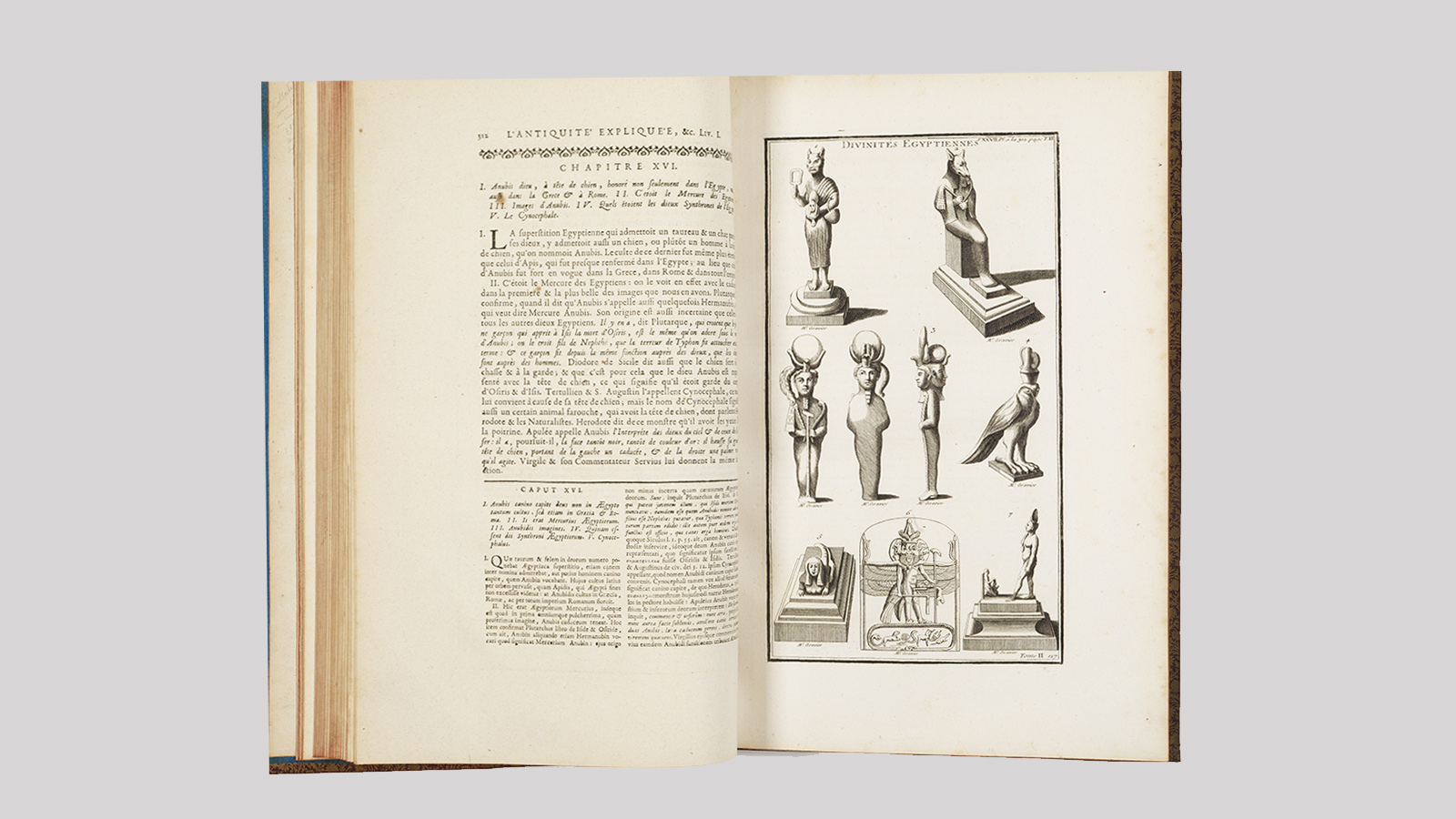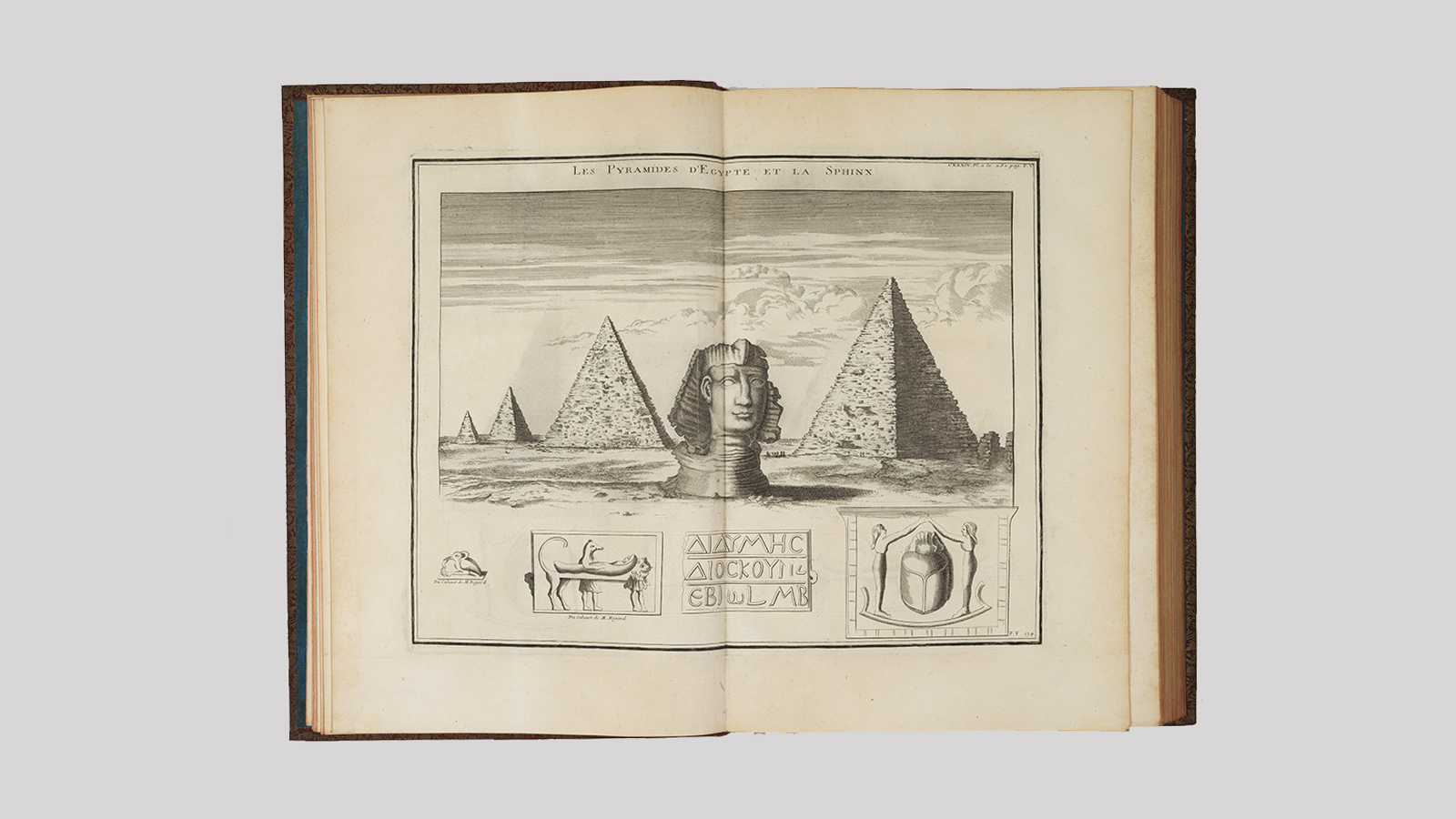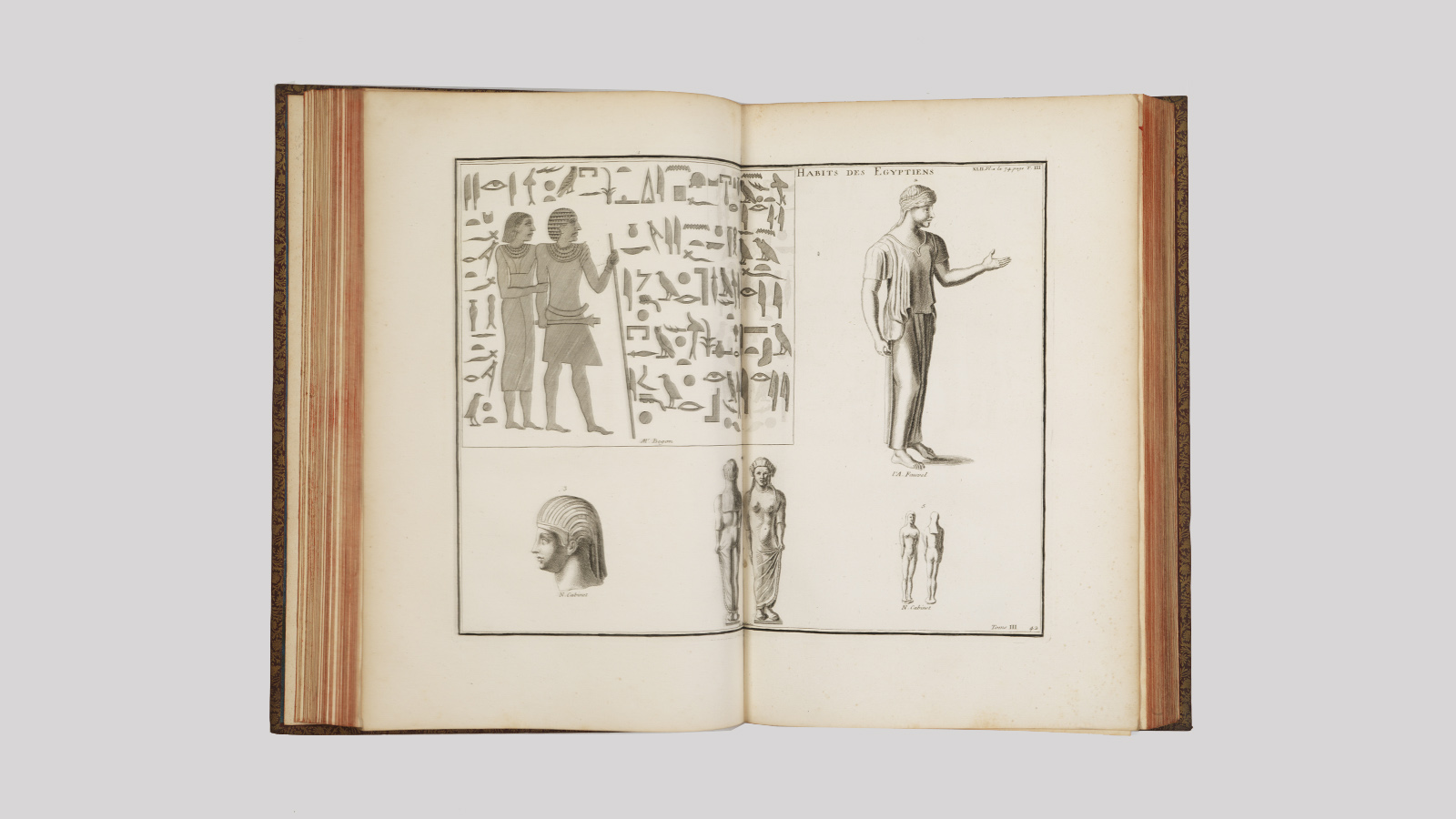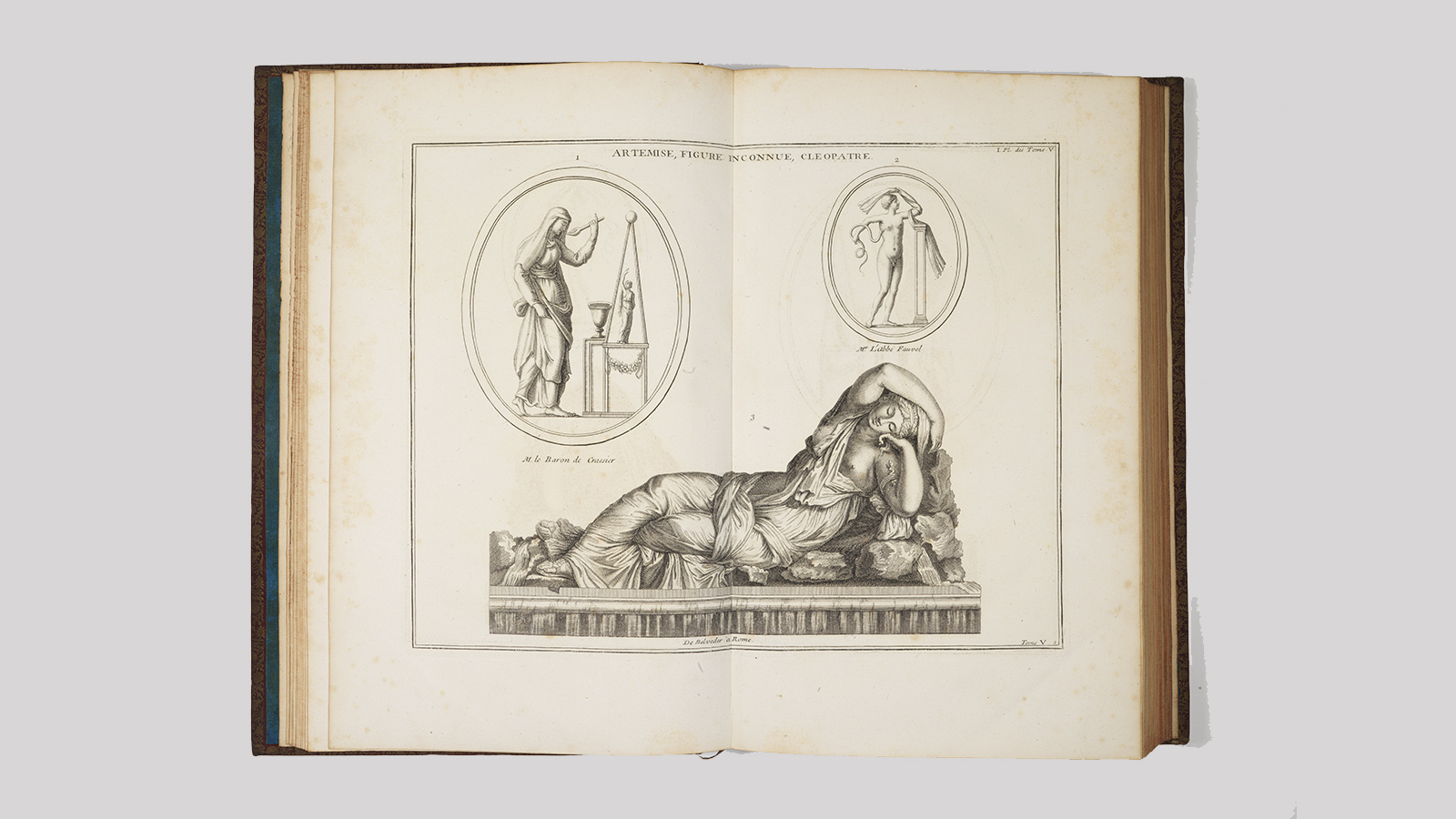Ancient Egypt in 18th-century European Books
Images of Ancient Egypt in 18th-century European Books
For centuries, biblical tradition and texts by historians from Ancient Greece and Rome fed a European image of Ancient Egypt, which started to be reconsidered following Napoleon Bonaparte’s expedition to Egypt (1789 to 1801) and the resulting archaeological discoveries.
The encyclopaedic spirit of the Enlightenment, and its efforts to compile knowledge and make it more accessible, along with the spread of printing techniques, meant that, in the 18th century, memories and impressions of Ancient Egypt could be disseminated, in text and image, through publications such as L’Antiquité expliquée et représentée en figures, by Bernard de Montfaucon. Of the fifteen volumes published (from 1719 to 1724), in which the Benedictine monk comprehensively and systematically described and illustrated the ancient civilisations, five are directly related to Ancient Egypt, covering topics ranging from religion (fig. 1) to funerary rites and monuments (fig. 2), from clothing (fig. 3) to civil and military architecture.



One of these volumes (fig. 4) and the book by Pierre-Jean Mariette, belonging to the Gulbenkian Collection (fig. 5), include reproductions of prints of the Palestrina Mosaic, produced in the late-2nd century B.C.E. in the town of that name on the outskirts of Rome. This authentic aerial view of Ancient Egypt, which follows the Nile from the Delta to the rocky areas of Nubia, shows contrasting images. On the lower part, it features towns with architecture of Greek influence, and ships for fishing, trade and war. At the top, we see lands inhabited by Black warriors and hunters, surrounded by real or imaginary animals.

![Fig. 5 - Jean-Jacques Barthélemy, ‘Explication de la Mosaïque de Palestrine’, in Pierre-Jean Mariette, ‘Recueil de peintures Antiques […]’. Paris: s.n., 1770, illustrated with hand-coloured etchings according to drawings by Pietro-Santi Bartoli. Calouste Gulbenkian Museum.](https://cdn.gulbenkian.pt/wp-content/uploads/sites/5/2023/11/egito-livros-europa-6-1.jpg)
Finally, another print included in one of the volumes of Montfaucon’s publication (fig. 6) demonstrates the iconographic strength of certain characters that we still associate with Ancient Egypt. The snake-shaped arm accessory worn by the figure (today believed to be Ariadne) led Montfaucon to identify the sculpture as a representation of Cleopatra, who is thought to have ended her life by allowing herself to be bitten by a venomous cobra.



